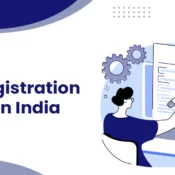
Registration procedure of Private Limited Company | Goodwill India Enterprises
In this blog, check our the registration procedure of private limited company in India. Goodwill India Enterprises will helps you to get the registration hassle free from small to enterprises business.
Process of Registration Procedure for private limited company in India
A private limited company is a type of business entity in India that is privately owned and has limited liability. Private limited companies are the most common business entity in India and are popular among foreign investors because they offer limited liability protection to shareholders. Private limited companies must have a minimum of two shareholders and a maximum of fifty shareholders. They must also have a minimum paid-up capital of INR 100,000. The main advantage of a private limited company is that it offers limited liability protection to shareholders. This means that shareholders are not personally liable for the debts and liabilities of the company. Another advantage of a private limited company is that it is easy to raise capital by selling shares to investors. Private limited companies can also issue bonds and debentures to raise capital. The main disadvantage of a private limited company is that it is more expensive to set up and maintain than a sole proprietorship or partnership. Private limited companies must also comply with more regulations and reporting requirements than these other business entities. If you are planning to set up a business in India, then a private limited company may be the best option for you. Private limited companies offer limited liability protection to shareholders and easy to raise capital by selling shares. However, private limited companies are more expensive to set up and maintain than other business entities.What is Private Limited Registration?
A private limited company is a business entity that is privately owned and has limited liability. Private limited companies are registered with the Registrar of Companies (ROC) and are governed by the Companies Act, 2013. The process of registering a private limited company in India is relatively simple and can do online. The first step is to obtain a Digital Signature Certificate (DSC) and a Director Identification Number (DIN). DIN can be applied online on the Ministry of Corporate Affairs (MCA) website. Once you have obtained DIN, you need to file an incorporation application with the ROC along with the requisite documents. The ROC will then issue a certificate of incorporation, and your company will be registered. After registration, you need to obtain a PAN (permanent account number) and a TAN (tax deduction and collection account number) for your company. You will also need to open a bank account in the name of your company. Once all of these formalities are complete, you can start doing business as a private limited company in India.Requirement for Registration procedure of Private Limited company
As per Act 2013, every Indian can start a company and register it as a private limited company. However, there are some requirements for setting up a private limited company. To register your company as a PVT LTD. Here are some details that are needed and necessary.- The minimum number of directors for an Indian company is two, but one of those directors must be a resident and have Indian identification.
- Shareholders for a company must be at least (2), and directors can also be shareholders.
- A registered office in India is required.
Benefits of Pvt Ltd Company Registration
There are several advantages to forming a recognized private limited company. They are:- Reach and attract more consumers
- Increase Customer trust
- A private limited company enhances your firm’s reputation and dependability.
- It safeguards the owners from losses and risk factors.
- It limits your liability.
- Obtaining a loan or credit for your business is an easy process.
- More appealing, dependable, and abundant financial supplies.
- Begin with a little investment and grow rapidly.
- Increase your company’s development potential.




